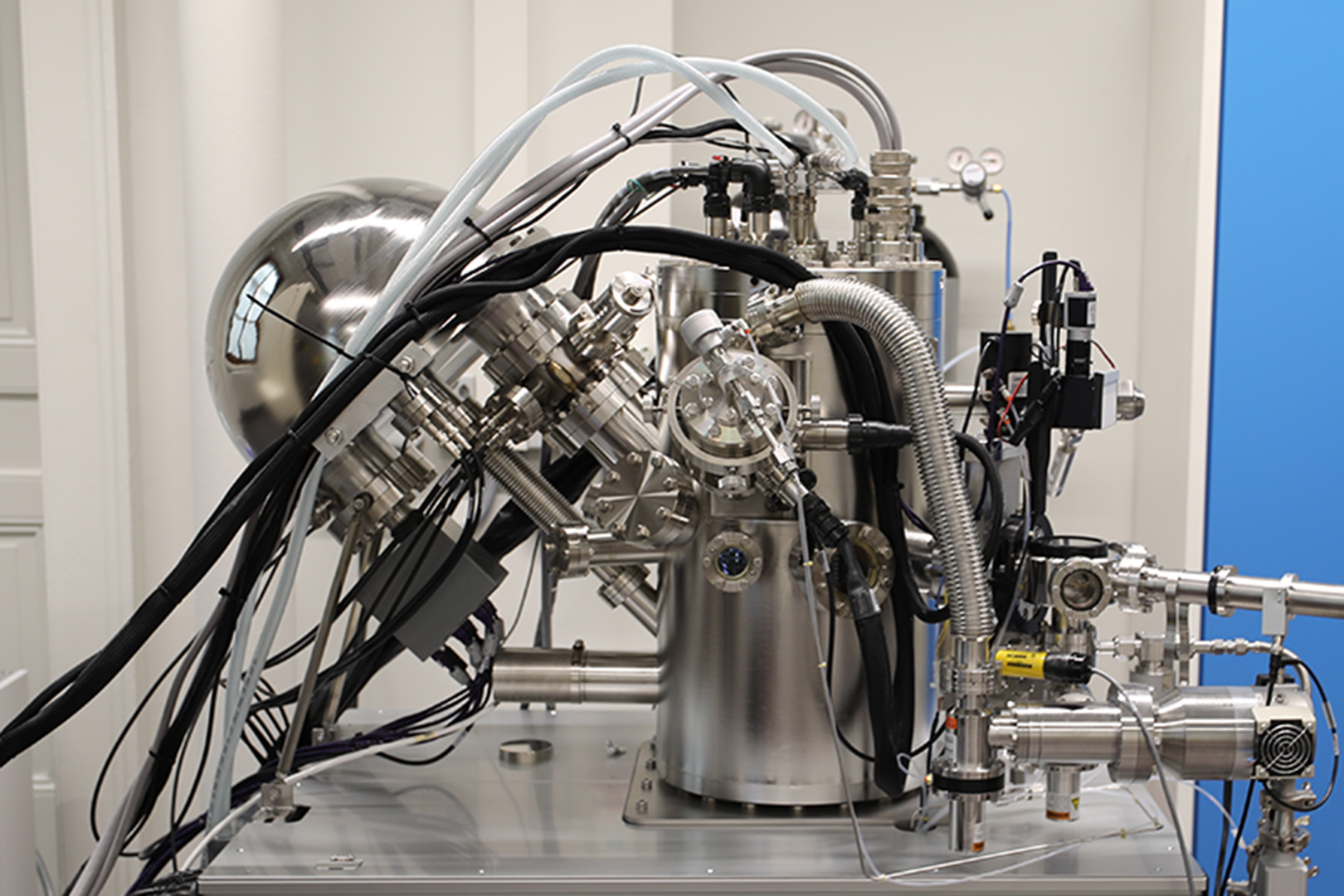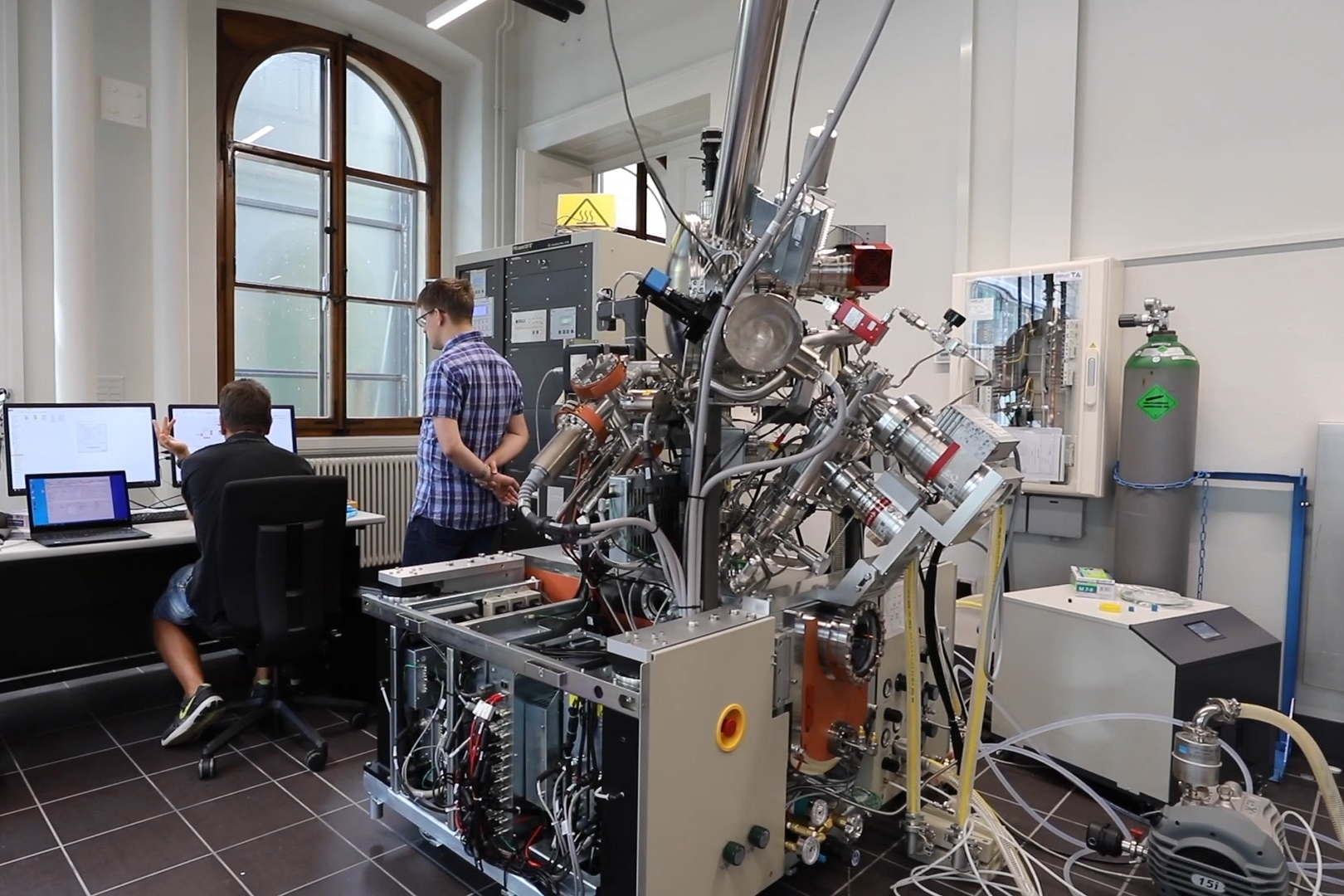High-performance chemical analysis and imaging platform
The platform
- a PHI nanoTOF II TOF-SIMS mass spectrometer
- a PHI VersaProbe III scanning XPS microprobe
These techniques probe the chemical and molecular composition of solid materials. They are both highly surface sensitive, providing information about the top few nanometres of the sample surface. This makes them important techniques for the study of materials and devices where functionality is defined by surface chemistry, such as catalysts, low friction surfaces, and bio-interface materials. Furthermore, both systems can probe bulk composition, and even create 3D images, using sputter depth profiling and microscale chemical mapping.
This platform supports academic research in diverse fields and is accessible to industry to tackle challenging research and development projects. It not only makes these high-performance chemical analysis measurements available in the Geneva area, but also has a team of scientists dedicated to providing expertise in project design, operation and data analysis.
The techniques
XPS
Quantitative (0.1 atomic %)
Sensitive to all elements except H and He
10 µm spatial resolution
Core level chemical shifts identify oxidation states, bonding environments and electronic structure
How does it work ?
More details
Our machine has a focused scanning X-ray source. This enables chemical mapping of the sample which can be used to identify chemical inhomogeneities or defects. With a minimum spot size of 10 microns we can also study defect chemistry or small patterned features.
Our dual charge neutralization system, that simultaneously compensates for static charge and the change generated by the photoemission process, allows insulating samples to be measured.
XPS measurements are performed under ultra-high vacuum conditions. Our system is also equipped with a transfer vessel that allows us to introduce samples directly from a glove box. This means that we can measure sensitive or reactive samples that must be kept in a protective atmosphere.
We also have the ability to add electrical contacts to samples and perform in situ transport experiments, for example to perform operandi XPS studies of solid-state battery interfaces.
TOF-SIMS
High sensitivity (0.1-1 ppm for elements)
Elemental and molecular identification
100 nm spatial resolution
Improved identification with parallel MSMS
How does it work ?
More details
The soft sputtering using argon cluster ions preserves the integrity of organic samples and is well suited for the depth profiling and 3D imaging of polymer systems such as drug delivery devices or even biological samples such as single cells.
The cold intro and cold stage of the system makes it possible to image tissue sections or single cells under cryo conditions to better preserve their chemical composition. Combined with the high spatial resolution and parallel MSMS capability of the instrument it makes the TOF-SIMS mass spectrometer of the platform a valuable tool for both biomedical and pharmaceutical research.
The team




